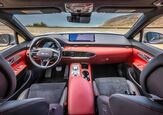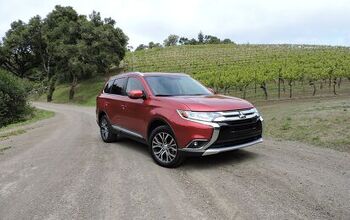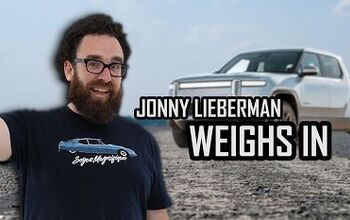2010 Mitsubishi Outlander Review
The Mitsubishi Outlander competes in a tough and crowded segment of small crossovers. Almost every carmaker has a least one offering, whether it’s the Toyota RAV4, Honda CR-V, Chevy Equinox, Mazda CX-7, Ford Escape, Volkswagen Tiguan, Hyundai Tucson, Kia Sorrento, or a host of others. After spending a week with the newest Outlander, I will definitely say that anyone looking for a high mileage sporty little SUV should certainly have this model on their radar for comparative shopping.
FAST FACTS
| 1. Fuel economy is rated at 21/25-mpg (city/hwy) for 4-cylinder models but we saw better. |
| 2. Pricing starts at just under $21,000 |
| 3. New styling for 2010 is inspired by Mitsubishi’s Lancer Evolution. |
| 4. The Outlander is one of very few compact crossovers with a 3rd row seat, although it’s mostly useless. |
AGGRESSIVE STYLING BREAKS WITH CATEGORY NORM
If you were to line up all the vehicles in this segment, you’d find the styling and shape of most of them to blend in with the others. But for 2010 the Outlander has undergone a styling remake that is both good looking and makes it really stand out in the crowd. The new shark-nose front end with its large trapezoidal honeycomb grill, cat-eye wrap-around headlights, and lower fascia fog lights, make the Outlander look meaner than the competition.
Large fender bulges are filled up with the 18-inch wheels on the SE model, and horizontal character lines make the car look longer than it is. The roofline, which slopes a bit at the rear end, features a lip spoiler above the rear hatch and clear rear taillight lenses with red LED lights are slick and distinctive looking. This is one of the best looking little SUVs around.
Inside, you’ll find the cabin to be spacious and clean-looking with attractive shapes for the upper and lower dash, and center stack. Brightwork accents the two large round gauges for the tachometer and speedometer, with an LCD screen between them for the dual trip odometers and fuel mileage info. The easy-to-use radio controls dominate the upper dash and a simple, large, 3-dial set-up makes it easy to work the heating and AC.
Storage in the front part of the lower stack area is good and a dual opening center console that has a USB and auxiliary input jack as well as a 12-volt outlet. The top also slides fore and aft for comfortable use as an elbow rest while driving. There is also a dual glove box with a large storage bin opening on the top of the dash and an even larger locking glove box below the dash.
A leather-wrapped steering wheel has redundant radio controls, cruise and phone controls, while the optional FUSE hands-free link system allows for voice commands for the Bluetooth phone and audio files. The sport seats are quite comfortable and well bolstered with grippy fabric for both the shoulder and hip areas for those times you play Ronny Racer and contrasting rich looking and feeling fabric seating surfaces. There’s plenty of headroom and shoulder room for front and rear passengers and legroom in the back is good for tall adults. The rear seatbacks can recline a bit for comfort and a nice center armrest with fold-out cup holders is also a nice touch. Outside, the mirrors are large and heated and provide a good look at what’s behind you, without obstructing your view from the driver’s seat, and they have LED turn signal indicators on the outside for added visibility. The windows, doors, and tailgate are power operated, and you can keep that key fob in your pocket to enter and start the vehicle.
THIRD ROW SEAT IS CRUEL AND UNUSAL PUNISHMENT
As part of the Sun and Sound Plus option package ($2,110) there is a “3rd Row Compact Stowable Seat.” From an engineering standpoint it’s brilliant in how it folds and stows into a very shallow and tiny place in the flat floor of the cargo area. Otherwise, it’s as useless as your out of work brother-in-law. It has slightly more padding than a park bench, with almost no legroom for anyone over the age of 5. And I’m sure that once your 5 year-old has ridden on it once, you’ll never again be able to convince him to go back there a second time.
However, with that seat folded flat there is a nice large flat cargo area, which can be made even larger with the rear seats folded up. Adding to the usability of the cargo area is an extra large split tailgate opening with a 6-inch flap that folds down for a low lift height to place cargo into the back.
The other part of that Sun & Sound package includes a killer Rockford Fosgate 9-speaker sound system with 10-inch sub-woofer, satellite radio, 6-CD changer and MP3 compatibility. The CD sounded great, but I’m sure there was something wrong with the FM Radio, since it got the worst reception I’ve experienced since my ’60 Chevy Bel-Air. The “Sun” portion is a tilt and sliding moonroof that brought a light and airy feel to the cabin.
The SE model comes with the standard 2.4-liter, 168-horsepower motor that puts out 167 ft-lbs of torque. This motor is rated at 21-mpg city and 25-mpg highway. My experience was 21 in the city, but a whopping 30 on the highway cruising between 60 and 70 miles per hour. Those are excellent numbers on regular gasoline, and with a 16.6 gallon tank, the Outlander has a highway cruising range of nearly 500 miles. There is an XLS and GT trim level that put a 230 horsepower V6 motor under the hood, which returns 18-mpg in town and 24-mpg on the highway.
BASE ENGINE PROVIDES ADEQUATE POWER
Acceleration from the inline-4 is more than adequate to move this 3,549 lb. car from a stoplight without feeling anemic. More power is always nice, but gas mileage is also important for many folks. The manumatic CVT transmission helps deliver the power to the pavement smoothly while in Drive mode and for a more sporting experience the driver can use the steering wheel mounted paddle shifters, or console mounted shift lever, to row through the gears for more sprightly performance and keep the engine in its powerband.
The engine can be a bit noisy when taking it to the 6500 rpm redline, but a cruising speed of 70 miles per hour, sees engine turning 2500 rpm contributing to excellent gas mileage. On the road, the entire cabin is well isolated from road and wind noise.
CHASSIS SHINES IN A FIELD OF WET NOODLES
The Outlander’s independent suspension is tuned to the firm side, but it’s never harsh, soaking up potholes nicely and offering a smooth highway ride. It feels athletic in the turns, with neutral handling and without much body roll.
I drove it mostly in 2-wheel drive mode, where all power is directed through the front wheels. There is a knob on the center console to switch to 4-Wheel Drive which will vary the amount of power routed to the rear wheels, and 4-Wheel Drive Lock means under very slippery icy conditions, as much as 60 percent of the power will be sent to the rear wheels. Standard on all Outlanders are ABS brakes, Active Stability Control, and Traction Control.
There are 4 trim levels available for the Outlander. The base ES model in 2WD starts at $20,840 ($22,240 for AWD). The SE model starts at $22540 in 2WD, ($23,940 for AWD). The XLS, which comes standard with the V6, starts at $24,990 in 2WD ($26,390 AWD) and the top of the line GT model starts at $29,250 and comes only in All Wheel Drive. As a result, any buyer interested in the Outlander will have a lot of options in terms of trim levels with engine choices and 2 or 4-wheel drive systems.
THE VERDICT
The Outlander offers fresh edgy styling, plus sporty agile handling with family versatility for convenience and economy. It does everything well and capably. It’s a solid, comfortable car for five passengers. If you need a vehicle for seven passengers, even occasionally, look elsewhere.
RELATED READING
2009 Volkswagen Tiguan
2011 Toyota RAV4 Review
2010 Hyundai Tucson: First Drive
2010 GMC Terrain SLT-2 Review
2010 Chevrolet Equinox 1LT AWD Review
LOVE IT
- One of the best looking small SUVs on the market.
- Excellent handling
- Better than expected highway mileage
LEAVE IT
- Third row seat is unusable
- The dash and console materials are all hard plastic on the ES and SE model
- The roof rack is standard, but no cross members
More by Ken Glassman




































Comments
Join the conversation